Recreating the Country blog |
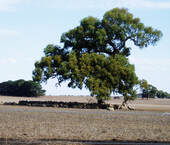 Sheep are less stressed in the shade of a paddock tree on a hot day. Click on image to enlarge Sheep are less stressed in the shade of a paddock tree on a hot day. Click on image to enlarge Dear reader, this blog is divided into two parts which can be read separately:
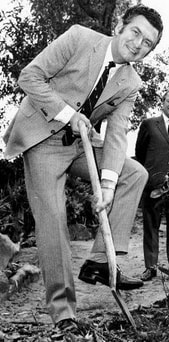 Prime Minister Bob Hawke planting a tree Prime Minister Bob Hawke planting a tree A modern Landcare fable In 1989 Prime Minister Bob Hawke was on his way to launch ‘a decade of Landcare’ in country Victoria. As he was being driven down a quiet country lane, he spotted an old woman in the middle of a paddock planting a tree. He lent forward and asked his driver to stop the car, “give me a minute can you Bill?” Bill couldn’t believe his eyes as he watched the Prime Minster of Australia climb the wire fence in his pressed suit and polished shoes. He walked across the grassy paddock toward the old woman with a string of confused reporters in tow. He called back to the reporters, “Ahhh, could you people give us a bit of privacy” From a distance, the huddle of reporters could just make out the conversation; “Gooday darlen”, said Hawke, “looks like you could do with some help”. He put out is hand and said “Bob’s my name”. The old women looked up with a curious smile. “Pleased to meet you Bob, Una’s my name. I can see you’re dressed for the occasion Bob”. She handed him the shovel and said’ “I suppose you know what this is for?” Bob gave her a big pearly grin and took the shovel. “Where do you want the hole Una?” As he pushed the shovel into the soil he said, “Una, do you mind if I ask your age”? Una, “I’m 87 today”. She paused as she considered, “I’ve planted a River Red Gum on my birthday since I had my first baby nearly seventy years ago”. “I’m impressed Una” said Bob. “Then why aren’t your children and grandchildren out here helping”? “They’re busy planting a thousand trees in the next paddock along the creek”, Una said. “Though, this is something I like to do myself, while I think about the year that’s just passed. She then said with conviction, “I think planting a tree is the best thing a person can do for the land and for the environment” Bob thought for a moment and said, “You’re an inspiring woman Una and I can see you have a lot more years left in you, but I doubt you’ll ever see your grandchildren climb the tree you’re planting today” Una, “Bob don’t you know the old Greek proverb”. Bob, “Can’t say that I do”. Una stood tall and looked directly at Bob, "A society grows great when old men plant trees in whose shade they know they shall never sit". And I could add Bob” said Una with a gentle smile, “a society grows even greater when both men and women plant trees that they will never see mature”. Bob considered for a moment and said mischievously, “Have you got another tree in that bucket Una? I think we’d better plant two”. The fable ends here but Una's story continues at the end of the blog... and it has a twist that you might not see coming. The benefits of Paddock trees: 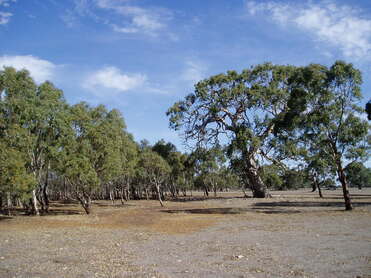 A healthy River Red Gum paddock tree and regenerating 4 y/o trees at the left of image at 'Woolbrook', Teesdale, Victoria A healthy River Red Gum paddock tree and regenerating 4 y/o trees at the left of image at 'Woolbrook', Teesdale, Victoria Benefits to stock and crops
After the study John came up with a radical 100 year plan that would enable him to plant paddock trees on the rest of his farm. The plan would also allow the existing old trees to regenerate naturally. You can read about how John did this in 'Paddock Trees part 3 - how to protect, regenerate & replant' Entomologist Dr Ian Smith from Ecologian supported John's findings at a recent Landcare presentation. He confirmed that scattered paddock trees provide better general wind shelter than shelter-belt plantations. This is because there is no turbulence or increase in wind velocities downwind beyond the protection zone of tree belts. On windy days paddock trees provide a more even and less turbulent reduction in wind throughout a protected paddock. Shelter belts planted across a farm at regular intervals of 100 - 200 meters, combined with scattered paddocks trees between the shelter belts, will provide the most wind protection in paddocks for stock and crops.
Studies show that sheep produce more wool and cows increase milk production by up to 20% in sheltered paddocks. New lambs are more likely to thrive in environments protected from the wind with 20% less mortality. 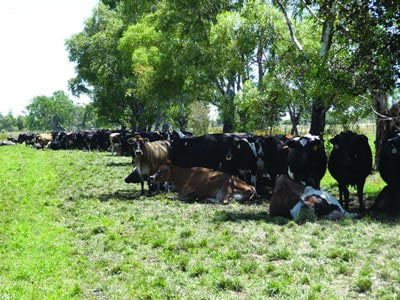 Dairy cows benefit from shade on hot days Dairy cows benefit from shade on hot days
How wind dehydrates plants? Plants maintain humidity over the surface of their leaves through their stomata. Strong winds remove this moist layer, drying the leaf surface. Plants try to replace this lost moisture, which the winds remove again, creating a leaf drying cycle. This dehydrates plants putting them under stress, usually causing them to wilt
Paddock trees create a cooler micro-climate and can reduce the radiant heat on hot days by more than 50%. This shade also benefits the farmers working around their property. http://coolcows.dairyaustralia.com.au/infrastructure/trees-for-shade  February 8th 1983 when the Mallee's soil came to Melbourne February 8th 1983 when the Mallee's soil came to Melbourne Benefits to the land
Soil on farms is a precious commodity that forms at an estimated rate of 10mm/1000 years in Australia’s southern states. It makes sense to protect this valuable asset, yet we lose tonnes each year through wind and water erosion. It’s estimated that the world loses more than 24 billion tonnes of fertile soil to erosion every year. In Australia dust storms carrying soil have become more common in dry years. Older Australians will remember February 8th 1983 when ‘the Mallee came to Melbourne’ and an estimated 140 million kg of topsoil was carried away in a dust storm that threw Melbourne into total darkness in the middle of the day. I recall a visit to a farm in Deans Marsh, Victoria in the mid 1980’s. The owner told the story of how his grandfather cleared a paddock of trees and shrubs for cropping. He then scalped a line through the paddock to create a shallow drain. Two generations later this shallow drain had become deep and wide enough to hide a two story house. Tonnes of precious soil had been washed down the Yan Yan Gurt Creek into Bass Strait. To prevent further soil loss the grandson was replanting trees and shrubs on the Creek and throughout the farm. Maintaining paddock trees, allowing the old trees to regenerate and planting scattered trees in bare paddocks is a strategy that would help address this significant and damaging annual loss of soil 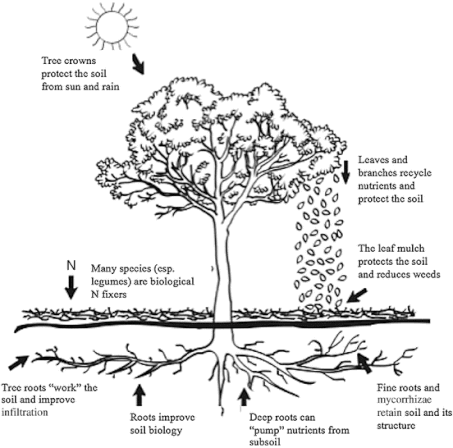 Trees enrich the soil with nutrients accessed deep down in the subsoil where other plants can't reach Trees enrich the soil with nutrients accessed deep down in the subsoil where other plants can't reach
Paddock trees have deep roots that search the subsoil and the deeper bedrock for minerals. Through osmosis and ion exchange mechanisms they absorb these minerals concentrating them in their leaves. These minerals are added to the soil around the tree when the leaves fall and decompose. Carbon from this leaf litter is also incorporated into the soil by insects like Springtails, (Class Collembola). These little insects are often seen in your garden leaping about when a log/rock is lifted uncovering their home. They are specialists in breaking down hard woody material into soil enriching and moisture holding humus. Soil fertility is also enriched by birds, marsupials and insects living in paddock trees. The nutrient rich animal droppings are vital to the health and survival of these isolated trees because they often grow in poorer soils low in nitrogen and phosphorus. Use this link to read more about paddock trees and birds and how they have built a mutually beneficial relationship 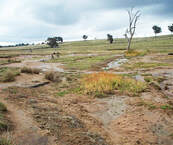 Typical effects of dryland salinity - death of vegetation from grasses to trees Typical effects of dryland salinity - death of vegetation from grasses to trees
Salt (sodium chloride or table salt) rising from the water table to the surface is called ‘dryland salinity’ and kills most plants. Farms with severe dryland salinity can look like deserts. Also high levels of sodium in soil changes its structure making it very erodible. Deep gullies can develop overnight after heavy rain. Dryland salinity devastated many farms in the 1980’s and 1990’s and became a focus for Landcare in its early years. Dryland salinity explainer Big trees are nature’s water pumps, taking most of their water deep down at the water table. One mature tree can drink 500 – 1000 L of water/day & in one day 1000 mature trees could empty an Olympic sized swimming pool. When millions of big trees are removed from the landscape, pumping from water-tables stops and the ‘Olympic pools’ deep underground (called groundwater) overflow and the water level rises to the surface. Often this water is naturally quite salty and it's made saltier at the surface by evaporation. These high levels of salt brought to the soil surface cause dryland salinity and are toxic to most plants. The simple solution to dryland salinity is trees. Keeping existing paddock trees healthy, allowing them to regenerate. Planting trees back onto the broader landscape is also an accepted strategy that will start to reverse dryland salinity in as little as five years. To read more about dryland salinity click here for a CSIRO article 'Dealing with Dryland Salinity' How biodiversity benefits farm production 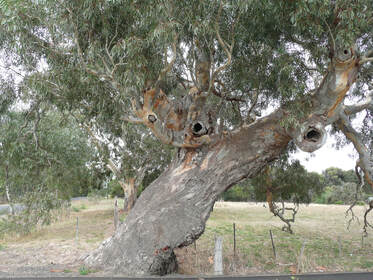 Hollows are needed by over 300 species of Australian fuana Hollows are needed by over 300 species of Australian fuana
Compared to areas without trees, even a small increase in numbers to 5 trees/ha in an agricultural landscape significantly increases the numbers of bats and birds present. The presence of a single tree can double the number of bird species. Paddock trees are also stepping-stones for animal movement between patches of native bush making it possible for wildlife to access the diversity of foods and habitats that they need to 'make a living'.  Wedge-tailed Eagles roost and nest in paddock trees. They help to control rabbits and hares on rural properties Wedge-tailed Eagles roost and nest in paddock trees. They help to control rabbits and hares on rural properties
Interestingly studies show that one x 100 year old tree produces a lot more nectar and pollen than two x 50 year old trees. So the food produced by old trees increases significantly as they mature supporting more wildlife and providing proportionally more pest control benefits. Increase bird and micro-bat numbers reduces pest insect species. Owls live in tree hollows and eat mice and rats, insectivorous birds like the Pardalote, Welcome Swallow and honey-eaters fly kilometres from their home trees searching for insects. Many of these are pests that damage grain crops as well as trees producing fruit and nuts. Magpies perched on old paddock trees have been recorded feeding on snails and slugs in vineyards. They also scare grape-eating birds like Starlings and Blackbirds reducing damage to bunches Ecologist Dr Rebecca Peisley from Charles Sturt University found that insect damage to apple orchards, vineyards and crops was reduced when sites were close to native vegetation. She also found raptors that control rabbits preferred paddocks with large paddock trees. Micro bats that live in hollows and fissures in paddock trees can consume 500 insects in an hour and half their body weight in insects every night. They also make a significant dint in mosquito populations. Parasitic wasps are attracted to paddock trees to feed on nectar and pollen. They lay their eggs on leaf-eating caterpillars keeping their numbers in check. They are critical to maintaining the insect balance on urban and rural landscapes. 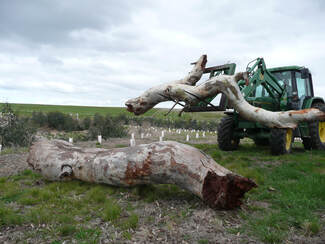 River Red Gum logs can provide both habitat and personal needs for firewood and crafts. A policy of take one, leave one satisfies both needs River Red Gum logs can provide both habitat and personal needs for firewood and crafts. A policy of take one, leave one satisfies both needs More benefits
Hugging a tree also improves our wellbeing. Click and scroll to the end to read about 'the science of tree hugging'
They are also a convenient source of firewood and craft wood that would be valued on farms. A practice of take one & leave one is the policy that we adopted on our rural property. This provides for both personal needs and the needs of wildlife. 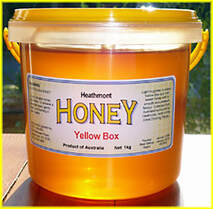
Because older trees produce consistently more nectar and pollen, honey products from paddock trees could be a valuable supplement to a farm income and the farm pantry. Feral bees will evict native fauna from tree hollows but well managed hives would pose little or no threat to native fauna.  Video on paddock trees The Fenner School of Environment and Society at the Australian National University has posted this 9.5 minute earthy video on the values of Scattered Trees on farms. Click here to watch. ....Una's story continues here; A parallel universe – imagine the perfect world Una watched the reporters trailing behind as Bob walked briskly toward his waiting car. She smiled as she thought of the geese in her orchard honking excitedly at feeding time. The animated gaggle of reporters talked amongst themselves, occasionally looking back to Una and nodding their heads in her direction as a sign of respect. Una chuckled, she was well aware of who Bob was but she hadn’t let on. She decided that she liked him and his ambitious plan to plant one billion trees. Her son Malcolm wouldn’t believe her story, or maybe he would when he saw the newspaper headlines the next day.
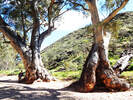 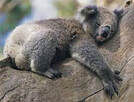 Paddock Trees - part 3. 'Restoring paddock trees and fostering the next generation' . Explores how we can protect paddock trees and restore them on our rural landscapes 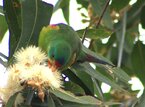 Paddock Trees - part 1. 'Their beauty and their bounty'. Explores the amazing benefits to the environment that old paddock trees provide.
2 Comments
|
Click on the image below to discover 'Recreating the Country' the book.
Stephen Murphy is an author, an ecologist and a nurseryman. He has been a designer of natural landscapes for over 30 years. He loves the bush, supports Landcare and is a volunteer helping to conserve local reserves.
He continues to write about ecology, natural history and sustainable biorich landscape design. 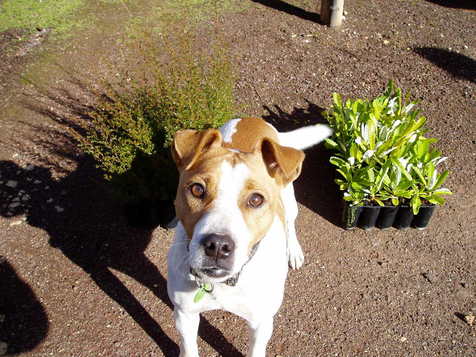
|
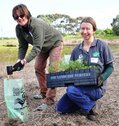
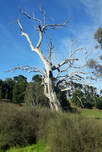

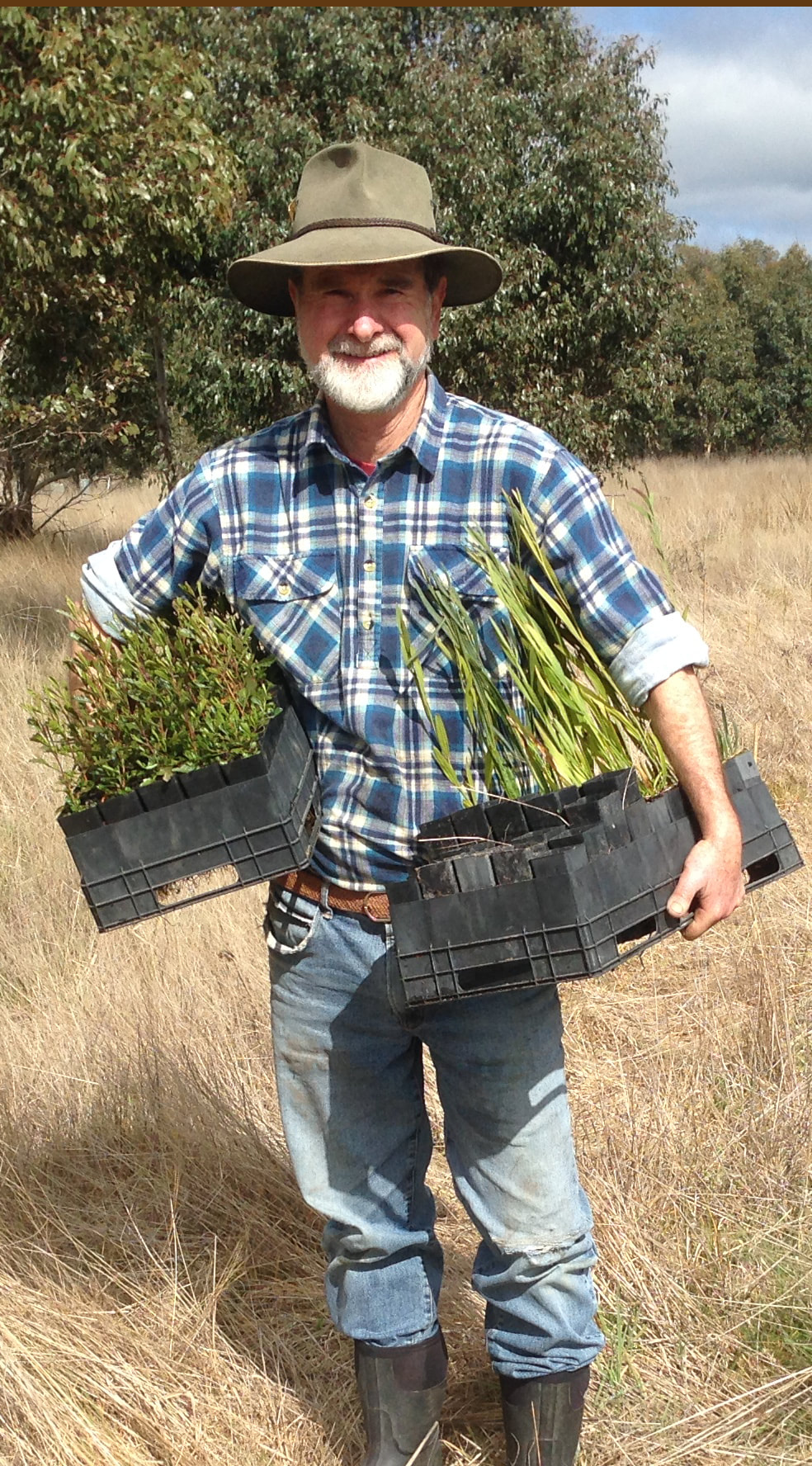

 RSS Feed
RSS Feed
